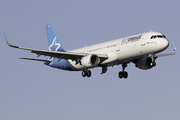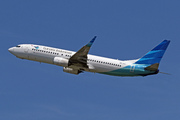Dépêches
Research and Markets: The 2011-2016 World Outlook for Air Freight Services
Dépèche transmise le 4 mars 2011 par Business Wire

Research and Markets: The 2011-2016 World Outlook for Air Freight Services
DUBLIN--(BUSINESS WIRE)--Research and Markets (http://www.researchandmarkets.com/research/632c9b/the_20112016_worl) has announced the addition of the "The 2011-2016 World Outlook for Air Freight Services" report to their offering.
“The 2011-2016 World Outlook for Air Freight Services”
The concept of latent demand is rather subtle. The term latent typically refers to something that is dormant, not observable, or not yet realized. Demand is the notion of an economic quantity that a target population or market requires under different assumptions of price, quality, and distribution, among other factors. Latent demand, therefore, is commonly defined by economists as the industry earnings of a market when that market becomes accessible and attractive to serve by competing firms. It is a measure, therefore, of potential industry earnings (P.I.E.) or total revenues (not profit) if a market is served in an efficient manner. It is typically expressed as the total revenues potentially extracted by firms. The market is defined at a given level in the value chain. There can be latent demand at the retail level, at the wholesale level, the manufacturing level, and the raw materials level (the P.I.E. of higher levels of the value chain being always smaller than the P.I.E. of levels at lower levels of the same value chain, assuming all levels maintain minimum profitability).
The latent demand for air freight services is not actual or historic sales. Nor is latent demand future sales. In fact, latent demand can be lower either lower or higher than actual sales if a market is inefficient (i.e., not representative of relatively competitive levels). Inefficiencies arise from a number of factors, including the lack of international openness, cultural barriers to consumption, regulations, and cartel-like behavior on the part of firms. In general, however, latent demand is typically larger than actual sales in a country market.
For reasons discussed later, this report does not consider the notion of unit quantities, only total latent revenues (i.e., a calculation of price times quantity is never made, though one is implied). The units used in this report are U.S. dollars not adjusted for inflation (i.e., the figures incorporate inflationary trends) and not adjusted for future dynamics in exchange rates. If inflation rates or exchange rates vary in a substantial way compared to recent experience, actually sales can also exceed latent demand (when expressed in U.S. dollars, not adjusted for inflation). On the other hand, latent demand can be typically higher than actual sales as there are often distribution inefficiencies that reduce actual sales below the level of latent demand.
Key Topics Covered:
- 1 INTRODUCTION
- 2 SUMMARY OF FINDINGS
- 3 AFRICA
- 4 ASIA
- 5 EUROPE
- 6 OCEANA
- 7 THE AMERICAS
- 8 THE MIDDLE EAST
- 9 DISCLAIMERS, WARRANTEES, AND USER AGREEMENT PROVISIONS
For more information visit http://www.researchandmarkets.com/research/632c9b/the_20112016_worl
- 19/04 Friedrichshafen 2024 : le projet "Fly The North"
- 19/04 Friedrichshafen 2024 : Aura Aero présente pour la première fois ses trois appareils
- 19/04 Friedrichshafen 2024 : Duc Hélices présente son hélice Tiger-3
- 19/04 Friedrichshafen 2024 : Splash-in Aviation expose son Pétrel X
- 19/04 Friedrichshafen 2024 : Robin "toujours présent et pour longtemps"
- 19/04 Friedrichshafen 2024 : Beringer présente au salon
- 19/04Friedrichshafen 2024 : la FFPLUM dément le passage de tous les ULM 3 axes à 600kg
- 19/04 Friedrichshafen 2024 : visite d'un Pilatus PC-12 (photos)
- 17/04 Friedrichshafen 2024 : Cirrus Aircraft présente son SR G7
- 17/04 Friedrichshafen 2024 : Piper présente son M700 Fury
- 17/04 Friedrichshafen 2024 : Junkers dévoile son A50 Heritage
- 17/04 Friedrichshafen 2024 : la société E-Props présente au salon
- 17/04 Le 30e salon de Friedrichshafen a ouvert ses portes
- 15/04 Airbus : commandes et livraisons de mars 2024
- 15/04 easyJet renforce ses dessertes depuis la France vers Budapest
- 15/04 Vueling inaugure sa liaison entre Orly et Heathrow
- 12/04 British Airways ouvre les candidatures pour son programme cadets Speedbird Pilot Academy
- 12/04 Icelandair et Expedia annoncent un nouveau partenariat
- 12/04 Turkish Airlines : résultats 2023
- 12/04 easyJet annonce deux nouvelles lignes depuis Lyon







